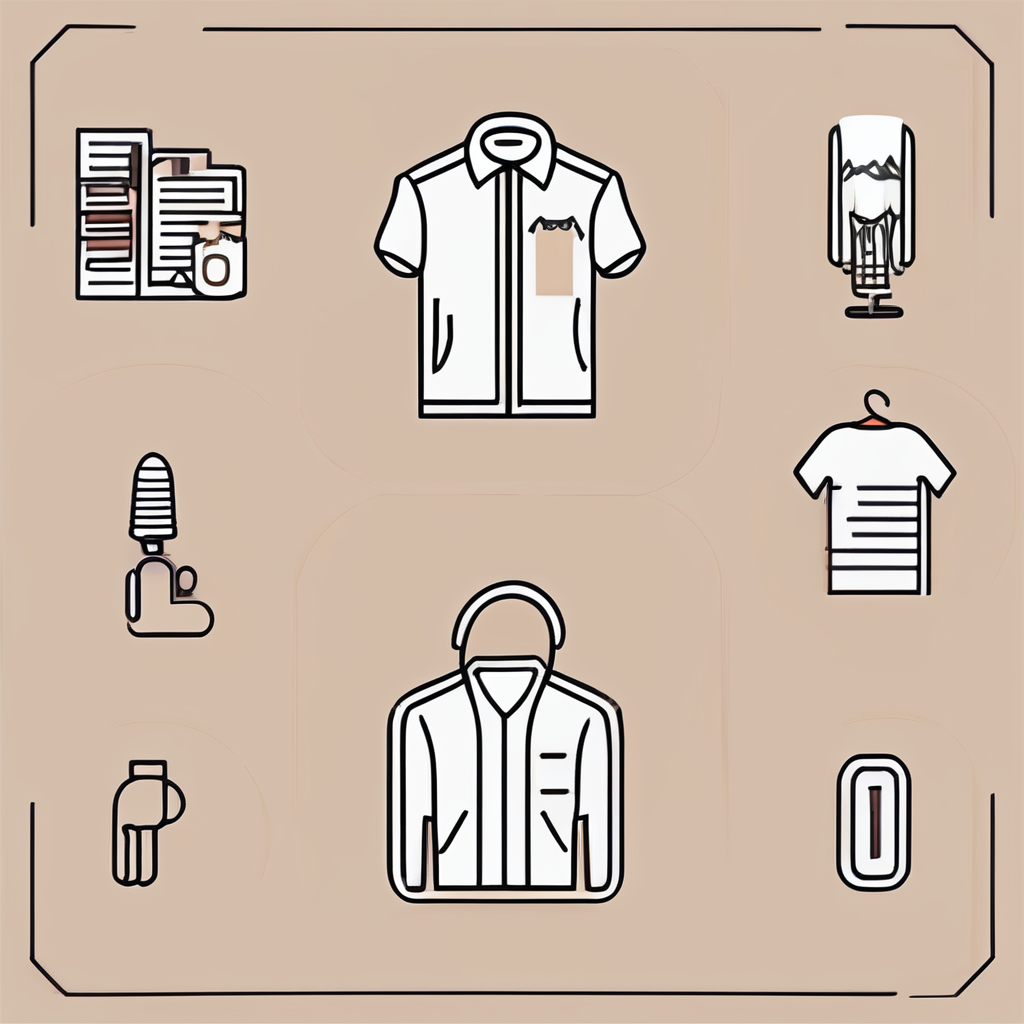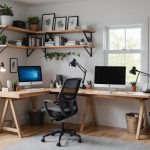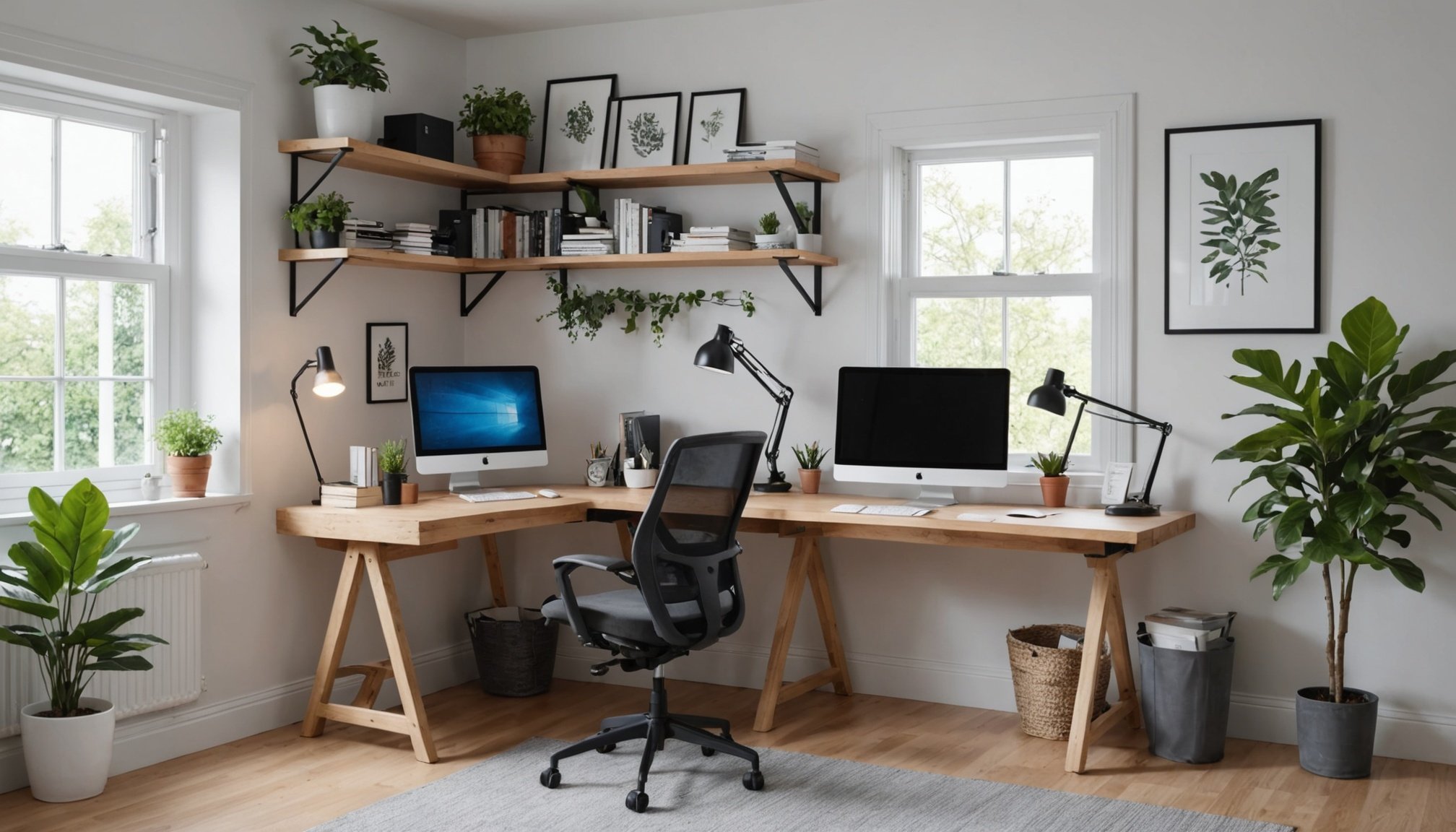Ergonomic Workspace Layout
Establishing a dedicated workspace at home can significantly enhance one’s focus and productivity. A thoughtfully constructed home office layout should prioritise an ergonomic design to keep comfort and efficiency at the forefront. Workspace arrangement isn’t just about where you place your desk; it encompasses the surroundings and atmosphere crucial for maintaining concentration.
The optimal desk placement typically involves ensuring it faces away from distractions, such as televisions or busy areas of a home. Adequate lighting, preferably natural, should illuminate the space without causing direct glare on screens. The positioning of monitors at eye level can promote a better posture, reducing strain on the neck and shoulders.
In the same genre : Crafting Your Unique Stress-Relief Yoga Sequence: A Step-by-Step Guide
Integrating movement and flexibility into the workspace arrangement is equally essential. Offering choices, like standing desks or seating that allows easy adjustment, contributes to the ergonomics of the workspace. It’s crucial to have a setup that encourages frequently changing positions, preventing prolonged static postures.
Incorporating these elements into your home office layout not only enhances comfort but also supports a sustainable work environment. By understanding and applying these principles, you can create an environment that nurtures productivity and minimises discomfort.
Topic to read : Mastering Minimalism: Create a Chic Wardrobe That Elevates Your Style
Ergonomic Furniture Recommendations
Choosing the right ergonomic furniture is crucial for enhancing your productivity and comfort. A good starting point is exploring ergonomic chairs. Chairs designed with ergonomics in mind often provide support to the lumbar spine, which can prevent or alleviate back pain. Key features include adjustable seat height, armrests, and a seat depth that promotes healthy posture.
Transitioning to a standing desk can also offer numerous benefits. These desks are popular for their potential to combat sedentary lifestyles. Adjustable standing desks ensure flexibility in your workspace, enhancing both focus and energy levels. They help reduce the risks associated with prolonged sitting, such as obesity and cardiovascular disease.
Finding the right desk height is essential for maintaining a comfortable and effective workstation. When selecting a desk, ensure it can be adjusted to allow your elbows to rest naturally at a 90-degree angle, minimizing strain on your wrists and shoulders. This promotes comfort and efficiency throughout your workday.
By carefully considering features like adjustability, support, and flexibility, you can make informed decisions about your furniture selection. This will lead you towards a healthier, more productive work environment.
Organization Strategies for Efficiency
Creating an organized and clutter-free environment plays a vital role in boosting productivity and reducing stress in your workspace. Establishing a space where every item has its place helps minimize distractions and enhances focus.
Start by implementing decluttering tips: regularly assess your workspace to remove unnecessary items, ensuring that only essential tools and documents remain. Adopting systematic approaches, such as the one-in-one-out rule, can help maintain order over time.
To further ensure a tidy workspace, utilize effective storage solutions. Invest in functional furniture, like shelves or cabinets, to provide designated spaces for different items. Incorporating labelled boxes or baskets adds another layer of organization, making retrieval easier and quicker.
Integrating productivity tools and technology seamlessly into your workflow is another crucial strategy. Digital tools can replace piles of paperwork, making files easily accessible through cloud services. Consider apps that help organize tasks, set reminders, and track project progress.
By maintaining a structured environment and leveraging the right tools, you create a workspace that supports efficiency. This not only enhances performance but also improves overall well-being.
Lighting Suggestions for Mood and Focus
In the realm of office lighting, the significance of natural light cannot be understated. Natural light not only enhances mood but also boosts productivity by creating an inviting and energizing atmosphere. It’s advisable to position your desk near windows to make the most of this free source of illumination, reducing dependence on artificial lighting. Task lighting plays a crucial role, particularly when natural light is insufficient or impractical. This form of lighting is designed to illuminate specific work areas, such as desktops or reading spots, providing adequate as light directly to the task at hand. Adjustable desk lamps, under-cabinet lights, and pendant lights are popular options. Positioning lights correctly is essential to minimize eye strain, a common issue in poorly lit workspaces. It is recommended that task lights be placed opposite your dominant hand to prevent casting shadows on your work area. Additionally, consider using adjustable fixtures that allow customization of light intensity, catering to your tasks and preferences throughout the day. By leveraging natural light and appropriately incorporating task lighting, you can create a balanced lighting environment conducive to both focus and well-being in your home office.
Minimizing Distractions in the Home Office
Creating a distraction-free zone is crucial for productivity. One effective approach is to reduce noise by incorporating soundproofing materials or white noise machines. These can help block out unwanted sounds, allowing you to concentrate better.
Focus strategies are vital. Begin by identifying what disrupts your work most frequently. It might be helpful to schedule specific work hours with defined breaks, ensuring both you and those around you understand these boundaries. Not only does this establish a routine, but it also reinforces the importance of a dedicated work space.
Utilize noise-canceling tools or apps. Products like headphones with noise-cancellation technology or apps designed to deliver focus-enhancing soundscapes can greatly reduce auditory distractions. They’re not just gadgets; they are practical solutions that transform noise into a source of productivity.
Lastly, consider your overall work environment. Decluttering your desk, ensuring adequate lighting, and ergonomic furniture can significantly improve focus. By combining these techniques, you’re not just eliminating distractions; you’re crafting an environment where productivity can flourish. Establishing these habits not only enhances your work but also promotes a more balanced home-office life.
Health Considerations in Home Office Design
When creating a home office, posture should be at the forefront of your design. Maintaining good posture is crucial to avoiding strain on the neck, back, and shoulders. Investing in ergonomic furniture, like adjustable chairs and desks, can considerably improve posture.
Taking regular breaks is another fundamental aspect often overlooked by remote workers. It is beneficial to integrate short, frequent breaks into your workday to give your body and mind time to reset. A widely recommended method is the Pomodoro Technique, which involves working for 25 minutes and taking a 5-minute break. These intervals can help maintain focus and prevent burnout.
Equally important is stress management. Remote work presents unique challenges that can lead to increased stress. Implementing simple stress management techniques can make a substantial difference. Practices such as mindfulness meditation, daily exercise, and establishing a clear boundary between work and personal life can significantly alleviate stress. Engaging in hobbies or leisure activities during breaks is also a valuable strategy to refresh your mind.
By prioritising posture, taking thoughtful breaks, and managing stress effectively, remote workers can create a healthier and more productive home office environment. Explore these options to enhance your work-from-home experience.











